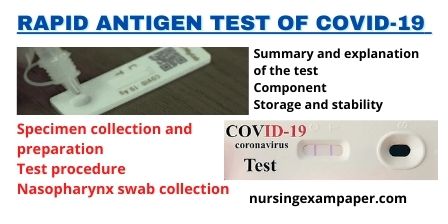A cataract is a common eye disease. It is a cloud above the natural lens of the eye. Over time the natural transparent lens of the eye becomes blurred. The staining of the lens is called cataracts. Which we also call white cataracts. The lens helps to focus on objects from different distances from the eye. And when it becomes blurred, light cannot reach the retina, and gradually the vision decreases. The end results in most people are blurred and distorted vision. The exact cause of the cataracts is unknown. There are different types and treatment of cataract, It(Senile) is most common in old age (after the age of 40), and it is the leading cause of blindness worldwide.

Etiopathogenesis
Click here to read about the black fungus
It is caused by degeneration and opacification of lens fiber or its capsule either due to aging, congenital, Hereditary, or some secondary causes.
Types Of Cataract Classification
It is mainly classified into two types of cataract. one is based on etiological factor and the other is based on location or locality.
A. Etiological classification
- congenital developmental
- acquired
- Senile age-related cataract
- Traumatic blunt or penetrating.
- Eye disease uvulitis PNAG, RP.
- Toxic steroid-induced moieties
- Systemic disease diabetes Mellitus, hypothyroidism galactosemia, dystrophy myotonia.
Craniotomy The Treatment of head injury
B. Classification by location of the opacity
- Cortical
- Nuclear
- Subcapsular
- Anterior Sab capsular
- Posterior subcapsular
- Capsular – posterior capsular cataracts
A brief description of the main types of cataract is as follows.
Senile/age-related cataract
- Etiology exactly not know but exposure to sunlight and UV rays plays an important role.
- Often starting after 40 to 50 years of age is developed in one eye first but both eyes are affected finally.
- Hereditary may be a factor of senile cataract.
- Loss of transparency of lens due to change in the proteins and degeneration of lens fibers.
Cortical cataract –
Asthma, types symptoms day and theme of the year
- Caused by swelling, degeneration, and liquefaction of outer cortical fibers, Its formation goes through the following stages.
- Intumescent cataract – Hydration
- Immature cataract – Cortical spokes like opacities.
- Mature cataract – Completely white lens.
- Hypermature cataract – Liquefied outer cortex.
- Hypermature morgagnian cataract – Sunken nucleus, the capsule may be calcified.
Nuclear cataract –
- Due to hardening and discoloration of lens fibers in the older central part, called nuclear sclerosis.
- Nuclear sclerosis gradually increases and the nucleus takes yellowish-brown color.
- Refractive index of the lens increases in nuclear sclerosis, refraction shifts to myopia.
Sign and Symptom / Clinical Features-
Patients with early or mild cataracts do not notice any visible changes in vision. But as cataract/blurring increases over time, it can cause a variety of visual sign and symptoms in daily life:
Signs –
- The decrease in visual acuity
- Color of the pupil – grey to white depending on the maturity of cataracts.
- Immature cataracts – opacities are seen on distant direct ophthalmoscopy.
- Iris Shadow – In immature cataracts.
- Slit-lamp exam – shows cortical opacities nuclear sclerosis or posterior subcapsular opacities
Symptoms –
STOMATITIS- Causes, Types & Sign/Symptoms
- Painless, Progressive decrease in vision.
- Frequent change in spectacle power
- Glare from bright light
- In posterior subcapsular cataracts PureVision in bright sunlight mononuclear diplopia or polyopia
Complication if left untreated
- Blindness
- Glaucoma – paedomorphic and phagocytic
- Lens induced cavities
- Subluxation and dislocation of the lens
Treatment of cataract
In early-stage – refraction and spectacle change may help.
In posterior subcapsular cataract– dark goggles or spectacles may help in sunlight.
Surgery – cataracts extraction and intraocular lens implantation.
Preoperative evaluation –
- History of systemic disease (Hypertension, DM, Respiratory or urinary disease), medication, part ocular diseases, and trauma.
- Vital analysis Pulse rate, color vision, Maddox road test.
- Intraocular pressure measurement.
- Syringing
- Keratometry – corneal curvature.
- A-scan biometry to measure axial length.
- Calculation of IOL power [P = A-(0.9 × dioptors + 2.5 AL in mm)]
- B-scan ultrasonography to evaluate the posterior segment if the fundus is not visible.
Laboratory Tests –
The following laboratory test is required before the surgical treatment of cataract.
- Haemogram (CBC)
- Blood Sugar
- HbsAg
- HIV
- HCV
- Urine analysis
- Physician opinion if any systemic disease is present.
- Xylocaine sensitivity test.
Cataracts Surgery Methods
- Extracapsular cataract extraction + IOL conventional done if other procedures are not possible.
- SICS + IOL.
- Phacoemulsification + IOL.
- Femto laser-assisted phacoemulsification + IOL.
Extracapsular cataract extraction
In extracapsular surgery, the physician makes a long incision (10 to 12 mm) at the edge of the cornea and removes a cloud of the lens in approximately one piece. And the remaining lens is removed by suction. The suture is required. At present, this conventional technique is used when other techniques or method is not possible.
AMU Previous Staff Nurse Exam Paper 2016
SICS (Small Incision Cataract Surgery)
- 6mm sclerocorneal tunnel – no sutures are required.
- Inexpensive Instruments.
- Less expensive IOL.
- Suitable for mass surgical camps.
- Early rehabilitation.
- Astigmatism is less then ECCE.
Phacoemulsification
Phacoemulsification is a modern method of cataract surgery. In which the ultrasonic handpiece emulsifies the lens of the eye and after that, the lens is aspirated. The anterior chamber is replaced with balanced irrigation fluid to prevent collapses, and a new artificial intraocular lens(IOL) is implanted instead.
Advantages-
- Small incision – 1.8 to 3.2 mm, no sutures required.
- It can be done under topical anesthesia.
- No induced postoperative astigmatism.
- Less traumatic hance less postoperative inflammation and pain.
- Early recovery, the patient can resume normal routine activities in a few days.
Disadvantages-
Expensive phaco machine and requires expertise foldable I.O.L. expensive.







